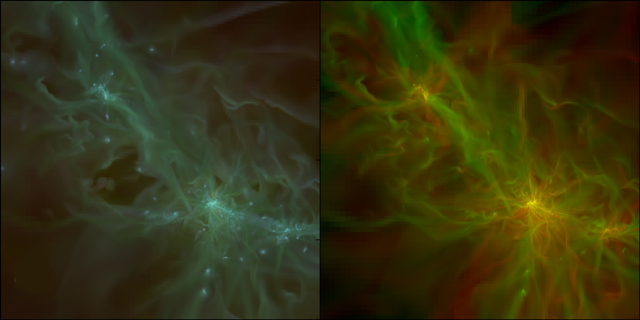Research highlight: The origin and role of magnetism in galaxies
Recognised as important in many astrophysical scenarios, recent studies are showing that magnetic fields have profound effects on the formation and evolution of galaxies. By employing numerical simulations, our work at the KICC has shown how magnetic fields can delay the birth of the first generation of stars as well as induce morphological and kinematic changes in galaxies.
However, one of the most fascinating open questions regarding magnetic fields is our lack of knowledge about the origin of the microGauss magnetic fields observed in the interstellar medium of galaxies. While the main candidates were already recognised several decades ago (Rees 1987), whether galactic magnetic fields are of primordial or astrophysical origin is still debated. By using novel algorithms when simulating galactic magnetism, researchers at the KICC have shown that a primordial origin is not only viable for magnetism in galaxies, but that it might also be distinguishable from the other scenarios. Figure 1 depicts how primordial magnetic fields are preserved through the formation of a spiral galaxy, with a strength comparable or above that of astrophysically-generated magnetism. This exciting possibility may help us use galaxies as potential probes into our primordial magnetic Universe in strong synergy with the next generation radio observations such as SKA.



